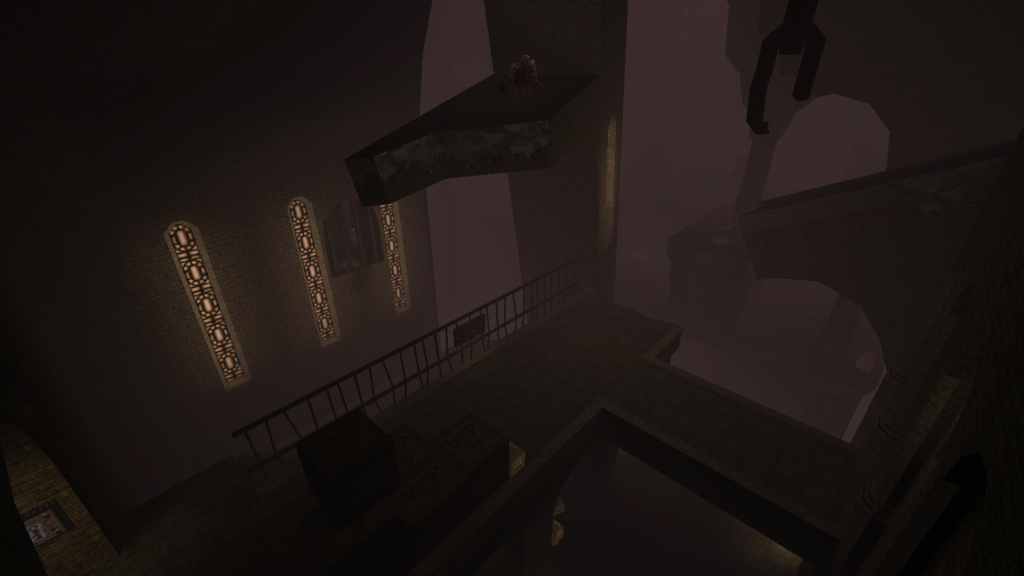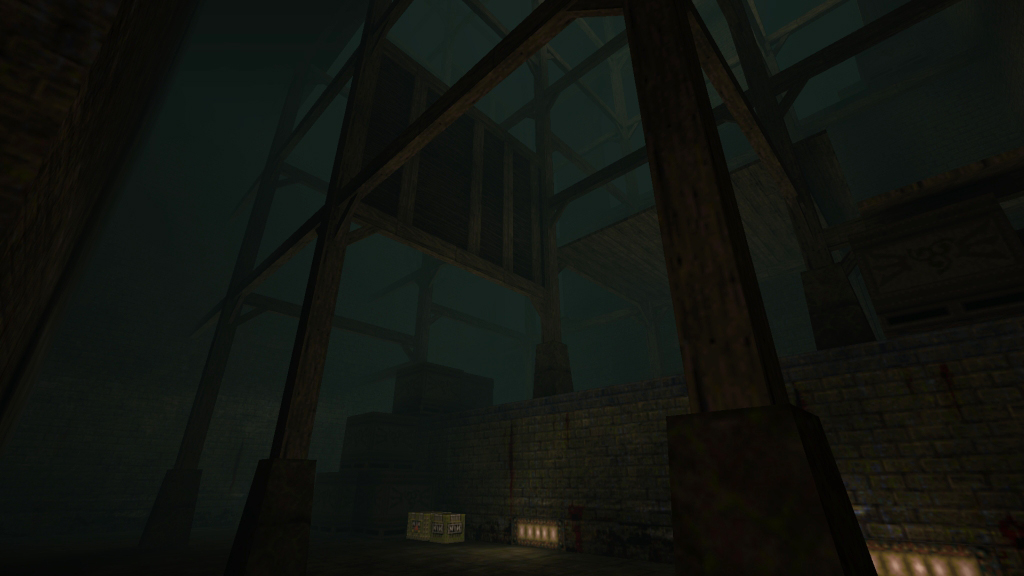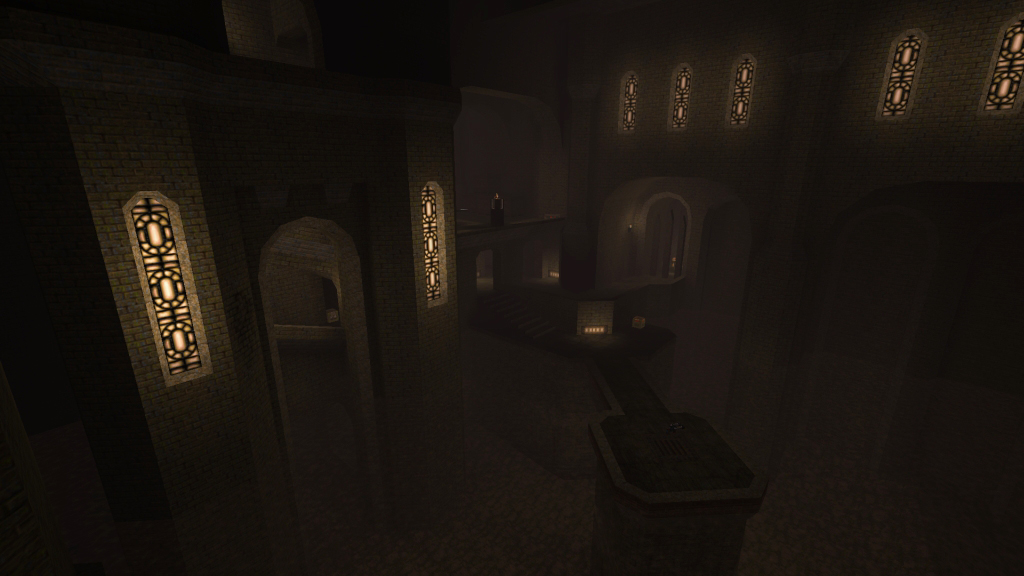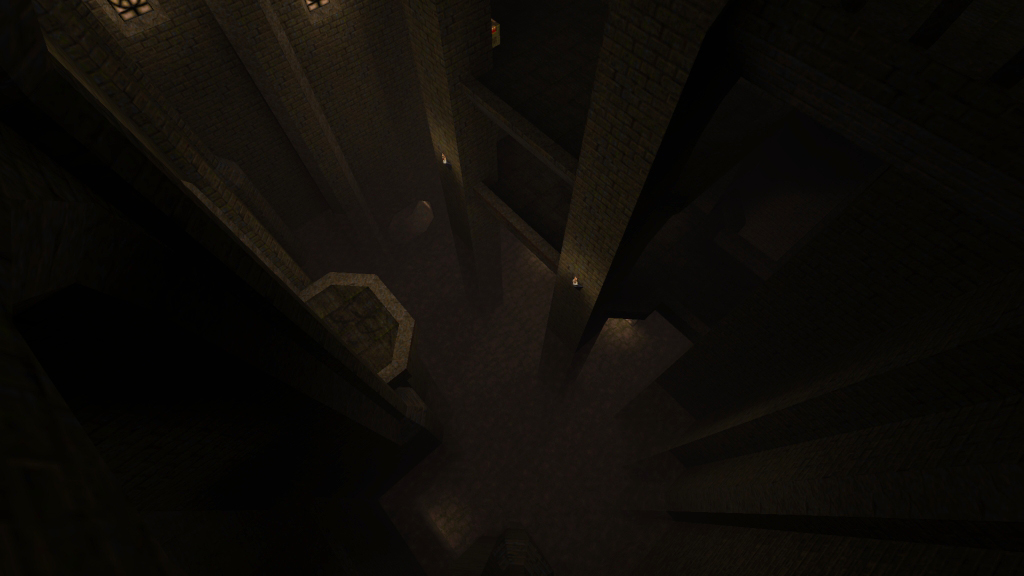Introduction
You come across an old village and find that it is deserted. Upon closer inspection of the well, it becomes clear as to why. While exploring the lower levels of the church, you become trapped and the only way out is to continue deeper.
Review
Honey is a set of two levels and a start map acting as the prologue, which provides the basic outline as to how the two connect. The story helps to set the scene as to what must be accomplished here surrounding the mystery of the village. This prologue also acts like a small tutorial, pointing out some of the changes the player should get used to and exploit. The axe can now slice up fallen zombies, meaning that explosives are no longer a necessity, and all it took was to sharpen the weapon. Secrets can now be slightly easier to find on the lowest difficulty because they will produce a subtle sound when near one, while on anything above easy they remain as normal. Eventually the player will come across a small hub and the choice between the level levels can be accessed in any order. There’s a common theme and style present between them, yet their locations do differ.
Sheer Hellish Miasma
Appears to take place above a never ending chasm putting a constant fear of falling. Jumping is then a part of progression between areas, usually across these deadly gaps. Fights as such are then designed to keep the player on the move, constantly pushing them back with ogres and knights, forcing one to be aware of their surroundings and to take care when close to the edge. Due to the nature of design there are many long stretches of space, so a new modified version of the ogre can be found guarding these areas and can be identified by a floating orb following them nearby. These brutes can lob grenades quite a distance and quickly, almost appearing as if they might be using rockets. The combat during this level can remain threatening despite the small groups of enemies.
Throughout this level, there are several metal containers with buttons inside of them. These are special locks which can only be unlocked by using either a grenade or rocket as designated by the front symbol. This effectively turns these weapons into key items for progression than just a simple gibbing tool, but of course these must be retrieved before they can be activated. How progression is handled here is an interesting aspect, creating this interconnected layout with many routes going through previously explored areas except on a higher level that wasn’t before accessible, or even causing the player to take the complete opposite direction entirely, providing an unfamiliar approach to combat within a familiar location. These places are then refilled with a fresh supply of ammo and enemies to take care of, offering new scenarios each time. The layout basically allows the progression to remain at a constant pace when returning to the earlier mentioned metal containers.
Constantly No Respect
Starts off in comparison on a much easier tone, but also provides an experience that is much closer to that of classic Quake and less experimental with gameplay ideas. Combat here however does increase in difficulty quickly and can be a challenge to survive. There’s no chasm this time which removes the fear of falling, so instead the use of enemies becomes harsher, especially with the amount of surprise Fiends and other higher tier beasts blocking paths. Occasionally there are even large groups of knights which charge down corridors and up stairways to force a quick retreat or else become cornered. The layout here is also fairly interconnected, usually changing from one height to another through jumps, elevators and stairways often, or a short swim through water.
Design across the two maps are on a grand scale, with many large and smooth archways surrounding the wide halls. But despite their common themes, they each have traits that set them apart. ‘Sheer Hellish Miasma’ makes use of thick hanging chains, stretching across from above, while thin wooden platforms keep the player between a painful fall into the deep chasm below. Other well presented details is the destruction, with entire pillars and archways having collapsed and barely holding on. Even better is the excellent texturing and alignment to accompany this. ‘Constantly No Respect’ is less about the chasms and focused a little more on water, appearing much more damp with several rusty metal panels and grating. There’s a good use of the fog in both maps, not only is it to help hide some bare spots due to the overall scale, but to affect the atmosphere when it changes appearance at specific points. This sets a different tone depending on where the player is, especially true for the black shroud which just about hides everything from beyond arms reach, only to make things more tense.
Conclusion
Two excellent maps, each presenting a different style of play and design traits in each. One is experimental through the use of locks via explosives and its nature of progression and layout, while the other is closer to that of a classic Quake experience, offering several challenging fights. Both look great and are enjoyable to play.






Very good review. Have some pedantic comments:
– The map names actually are “Sheer Hellish Miasma” and “Constantly No Respect”.
– The sound cue for the secrets is on skill 0 only.
– The “Waterworks” theme tag should probably be “Cistern” instead.
Good to see you dropped the ratings part BTW!
Cheers for the corrections, I’ll update those!
Yeah, good review. But the screenshots are too dark, especially the ones on the right. Show some love to old CRT users and increase brightness/contrast a little, will you? In PS, good values are 10/15 or sometimes 15/20.
Also, “a constant fear of falling into the PLAYER”